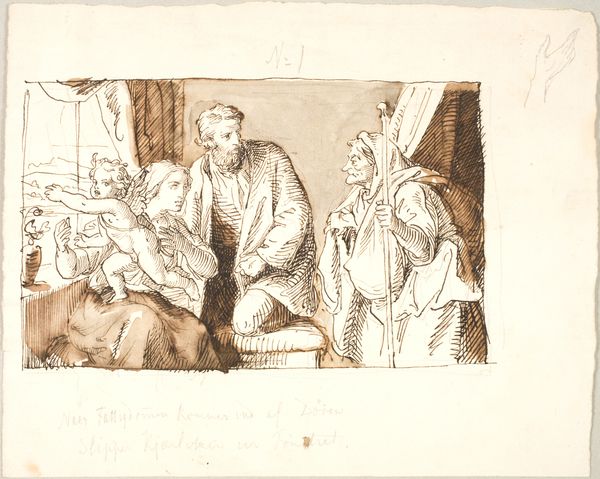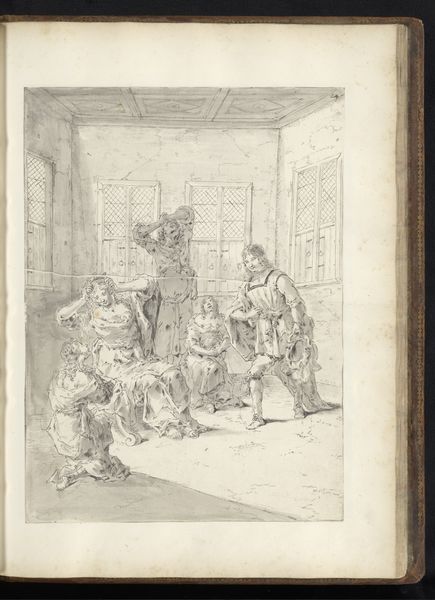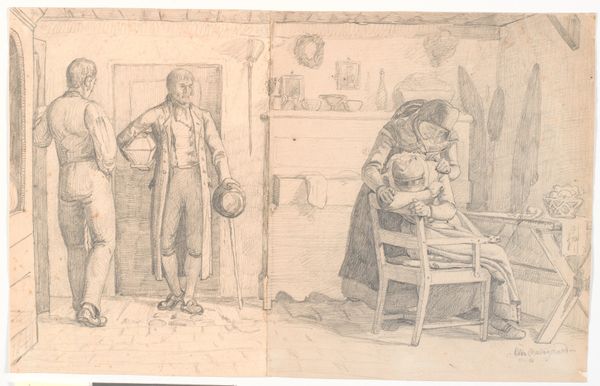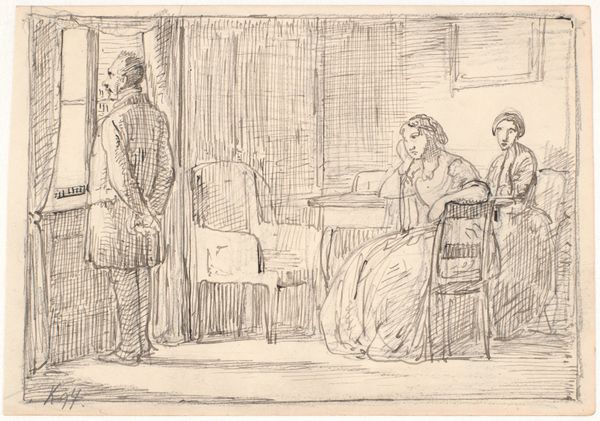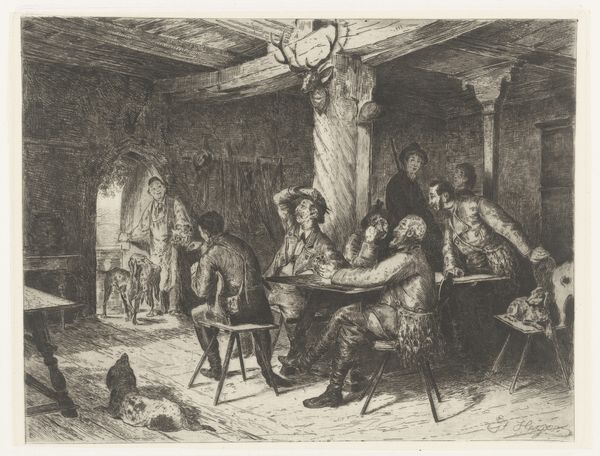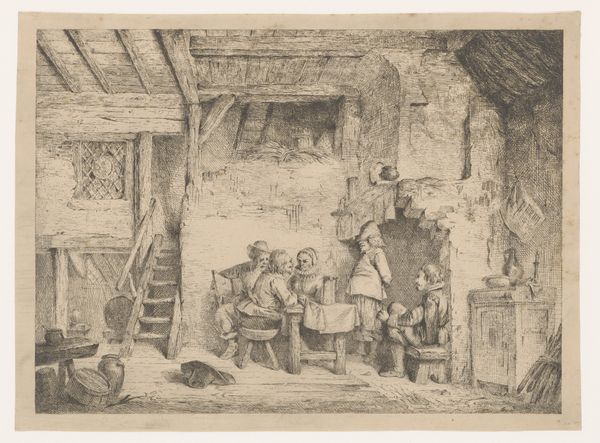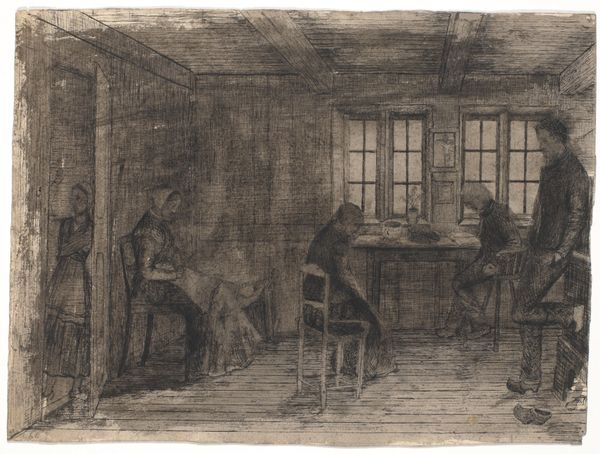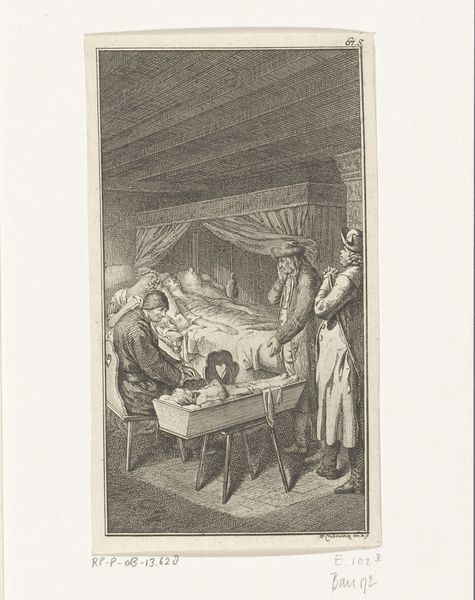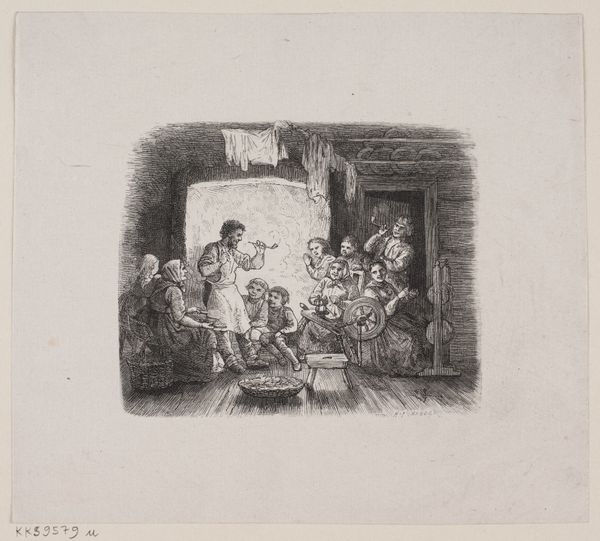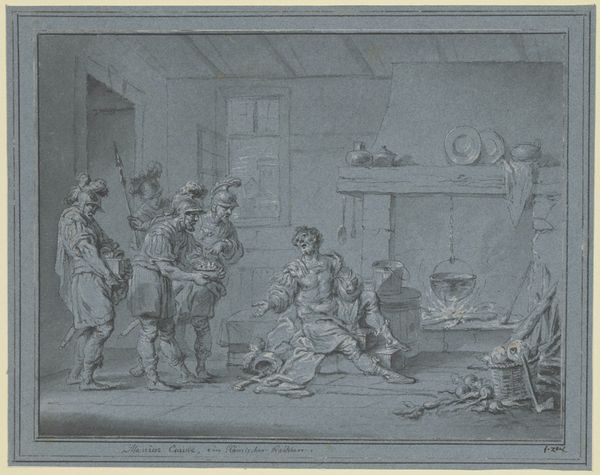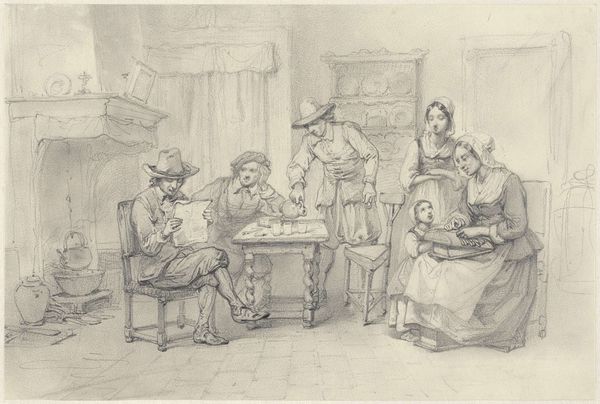
drawing, pencil
#
portrait
#
drawing
#
study drawing
#
pencil
#
genre-painting
#
history-painting
Dimensions: 152 mm (height) x 225 mm (width) (bladmaal)
Curator: Let's discuss Lorenz Frølich's pencil drawing, "En bonde, der har gæster kalder sin søn ind", from 1851, here at the SMK. It translates to "A farmer who has guests calls his son in." What's your first impression? Editor: Stark contrasts. It feels simultaneously intimate and performative. The subdued palette and light wash give a sense of immediacy, almost as if capturing a fleeting domestic drama. I am drawn to the linear framework of the furniture versus the curving of the figures themselves. Curator: Precisely. The scene captures a specific moment in 19th-century rural life, laden with unspoken codes. The farmer's raised hand--the central, assertive image—demands attention. Editor: It acts as a gesture of both command and hospitality, I think. Structurally, his body sits at a clear junction within the overall arrangement. Notice how that stark, white table cuts through the drawing. I wonder, could that table then symbolize a form of social division? Curator: Yes! The table is literally, and figuratively, setting the stage! Note the gaze of the son, positioned in the doorway – not quite in or out. Is he reluctant or merely pausing? The woman stands calmly beside him, perhaps a voice of support. These familial interactions echo the tensions between generations and the evolving social dynamics. Editor: Absolutely. And observe the controlled yet casual quality of line. The pencil strokes define form while also conveying atmosphere and that subdued coloring really speaks volumes, even more now than, I suspect, in the past. Everything contributes to this understated but intense exchange. Curator: Consider, too, the implied narrative. Frølich is hinting at a broader social commentary—the changing roles within the household, the pressures of hospitality, the expectations placed on the younger generation. Editor: The way Frølich juxtaposes light and shadow truly guides the eye through the piece, making the viewer feel complicit in the unfolding drama. It reminds us how form can serve as a language, capable of transmitting intricate ideas through subtle arrangements. Thank you, Lorenz Frølich. Curator: Indeed. And for underscoring how art provides such tangible records of culture and family, it has made my day. Thank you.
Comments
No comments
Be the first to comment and join the conversation on the ultimate creative platform.
